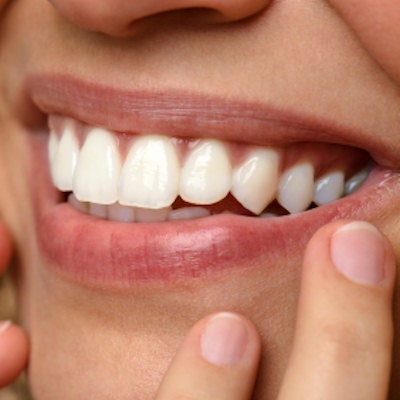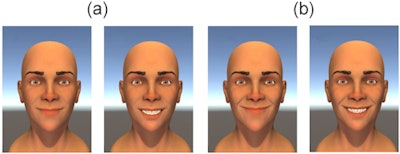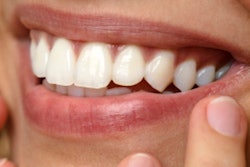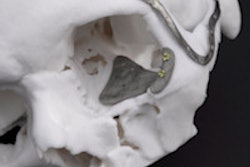
What qualities make a smile successful? Researchers of a new study explored how mouth angle, smile extent, timing, and number of teeth shown can change how a smile is perceived. Their answer? The perfect smile can take a number of different forms.
Successful smiles have an ideal range for angle, extent, and timing, the researchers found. The findings, which were published in PLOS One (June 28, 2017), have particular relevance for those who work in facial and smile reconstruction and rehabilitation.
"We found that a successful smile involves an intricate balance of mouth angle, smile extent, and dental show in combination with dynamic spatiotemporal timing," wrote the authors, led by Nathaniel Helwig, PhD, from the University of Minnesota Department of Psychology and School of Statistics.
More than one perfect smile
Facial expressions are a cornerstone of communication, yet the intricate spatial and temporal properties that underlie and display emotion are difficult to study. Nevertheless, these characteristics are important to research, particularly for providers who work with people with impaired facial animation, including smiles.
“A successful smile involves an intricate balance of mouth angle, smile extent, and dental show.”
To find out which mouth properties created the perfect smile, the researchers created and analyzed multiple 3D models. They created more than 20 different versions of smiles, varying mouth angle, number of teeth shown, smile extent, and delay between the right and left sides. They then asked 800 members of the general public to rate the smiles for their effectiveness, genuineness, pleasantness, and perceived emotional intent. The researchers defined a successful smile as one that was effective, genuine, and pleasant.
There is no single ideal smile, the researchers found, but rather successful smiles tend to have a range of properties. Specifically, smiles were rated highest when they had a mouth angle of 13° to 17°, an extent of 55° to 62° of the distance between pupils, and a delay of less than 125 milliseconds.
In addition, smiles with a slight asymmetry ranked higher than those with perfect symmetry, and showing more teeth did not always result in a better score. In fact, for those with a low mouth angle, smiles without teeth or those showing a medium number of teeth were perceived more favorably.
 Dental show effect at different levels of angle-extent. Smiles with a smaller angle-extent combination (a) were rated better with no teeth shown, but those with a larger angle-extent combinations (b) were rated worse with no teeth shown. Image courtesy of PLOS One.
Dental show effect at different levels of angle-extent. Smiles with a smaller angle-extent combination (a) were rated better with no teeth shown, but those with a larger angle-extent combinations (b) were rated worse with no teeth shown. Image courtesy of PLOS One.The authors noted that their findings contradict some widely held beliefs, notably that more extended smiles are always better. They hope their optimal range may be able to help create more successful smiles for patients and that future researchers continue to leverage 3D technology to evaluate how minute differences in smile presentation can change how they are received.
"Our result regarding the optimal window of smile extend contradicts the principle that 'more is always better' with respect to smile extent," the authors wrote. "Instead, clinicians should use both mouth angle and smile extent as outcome measures, because an effective smile requires a balance of both."



















